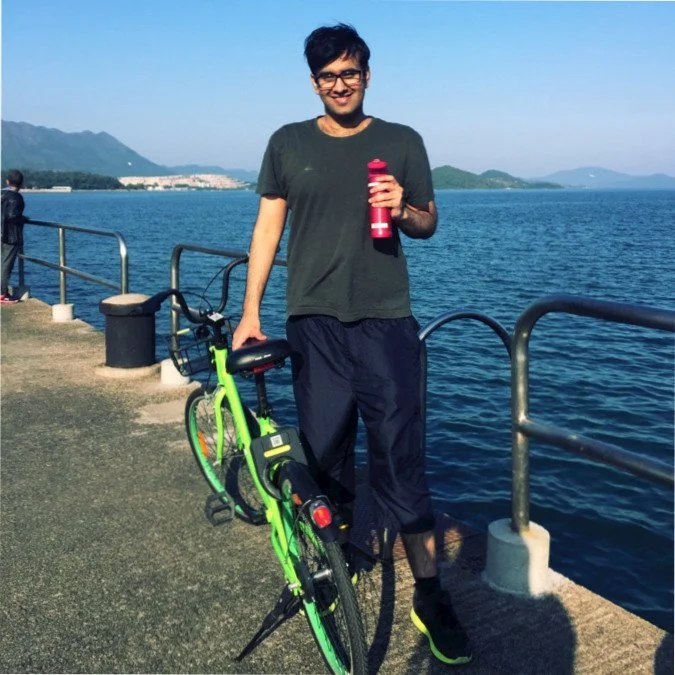Built company-wide systems and processes for sustainable and scalable growth
CompanyRush Hour Digital
industryCreative & Tech
RoleDesign Lead
timeline6 months
toolsGoogle Analytics, Google Forms, Atlassian, Figma

summaryRHD (Rush Hour Digital) is a Hong Kong-based digital agency, founded in 2012, specialising in UX/UI design, digital strategy, and development for startups and global enterprises. RHD has served over 150+ clients.
I joined RHD as their Design Lead of 4 junior to senior designers; and sat as part of the Leadership team steering the company’s direction
I found that the firm’s design maturity was at a 2 with no processes in place according to NN Group’s Stages of UX Maturity,
I needed to work with the teams to improve workflows and get buy-ins from the Partners while jumping into my first big overseas project as a Design Lead
The initiative resulted in a cohesive team, improved processes reducing development delays, company-wide adoption of OKRs, streamlined operations via Figma, and secured design awards, boosting morale, efficiency, and external visibility for Rush Hour Digital.
Challenges
-
01
Inefficient inter-team communication led to siloed workflows, with team members hesitant to seek help, causing delays and misaligned efforts.
-
02
Development processes and project launch suffered from prolonged timelines due to fragmented workflows and inefficiencies in coordinating tasks across teams.
-
03
There was an absence of clear, aligned objectives at the individual, team, and company levels, which limited purpose-driven efforts and company-wide cohesion.
-
04
The team lacked a framework to leverage individual expertise, with previous approaches potentially favouring uniform skillsets over specialised strengths, reducing innovation and efficiency.
my roleI spearheaded the transformation of RHD’s design team by fostering collaboration, streamlining processes, and aligning goals to drive scalable growth and impactful outcomes.
I emphasised leveraging individual expertise over uniform skillsets, focused on stakeholder strengths to enhance collaboration and innovation.
I developed a flexible design framework using Service Design principles, ensuring continuous feedback loops to foster team ownership and adaptability.
I established weekly syncs to address communication gaps, which was later adopted company-wide.
I streamlined workflows by auditing tools transitioning from fragmented ones (Sketch, InDesign, Zeplin) to Figma, optimising collaboration and reducing inefficiencies.
I introduced OKRs (Objectives and Key Results) to align individual, team, and company goals to create a unified purpose to ensure sustainable impact, presenting the approach to the Founder for company-wide adoption.
I implemented component-based design systems to tackle development delays, applying cross-functional integration.
my approachI defined the problem and aligned with stakeholders
I began by observing team dynamics and conducting open discussions with leadership to holistically map pain points, strengths, and opportunities.
I co-created with my team to kickstart collaboration
I gave the team ownership of process by presenting my findings to the team and collectively discussed their feedback. Documentation, such as ‘Communication Style’, ‘Weekly Stand-up’, ‘Resource Mapping’, and ‘Dev Handover’ were a few that were delegated.
I facilitated cross-function collaboration for company-wide growth
I had sessions with our Tech Lead and PMs to understand how our team’s process was negatively impacting theirs.
Defining the right problems to solve is the catalyst for impact
-
45%
Decreased estimated project timeline from new processes
-
98%
Employee satisfaction survey for a 60-day run
-
8
Silver and Gold w3 Awards for 8 sites
key results-
Weekly syncs. I established a weekly catch-up for my team for task updates, road blocks and team sharing. Projects and challenges were now visible and fostered accountability and collaborative spirit. Seeing its success, Development and Clients team adopted the practice which created incremental growth.
Prioritised key strengths over uniform skills. Rather than pursuing a "full-stack" model, we capitalised on individual expertise. This approach allowed every team member to lead projects while contributing their unique strengths. Assigning projects became nearly automatic as skills were mapped out appropriately.
I gave them ownership of process. We co-created a flexible design framework that evolved through continuous feedback loops. Communication Style, Weekly Tracker, Dev Handover, UX Discovery Pack were among the processes and documentation our team came up with.
Streamlined process by auditing and offloading paid subscriptions. We canceled subscriptions to a number of apps and extended the use of high-usage apps. We elevated our design tool to Figma from Sketch + InDesign + Zeplin. Collaboration across not only the Design team but all teams, became much more seamless and contributed to a reduced project timeline.
-
I introduced my team members to OKRs and helped define their goals and do check-ups. I presented this to our Founder, asked me to present it to the company and implemented it across the board. All teams started moving towards a common goal. Employee satisfaction survey after 6 months came back at a 98% rating.
-
To address the issue of project timelines ballooning at development stage, I scheduled meetings with the Tech Lead to design a solution. We came up with the company’s first ever component-based project and design systems that largely contributed to a 37% decrease in project timeline - item on his wishlist that the previous Design Leads refused.
-
I signed up our best designs to w3awards and got recognition for 8 out of 9 projects. Trophies and certificates of which are proudly displayed in the office to remind everyone of their hard work.
testimonial



